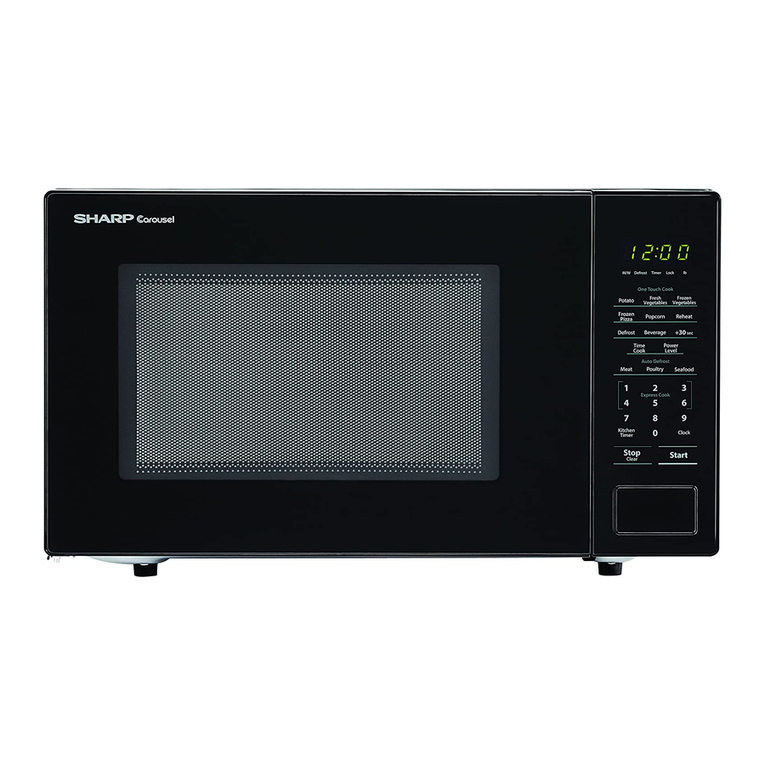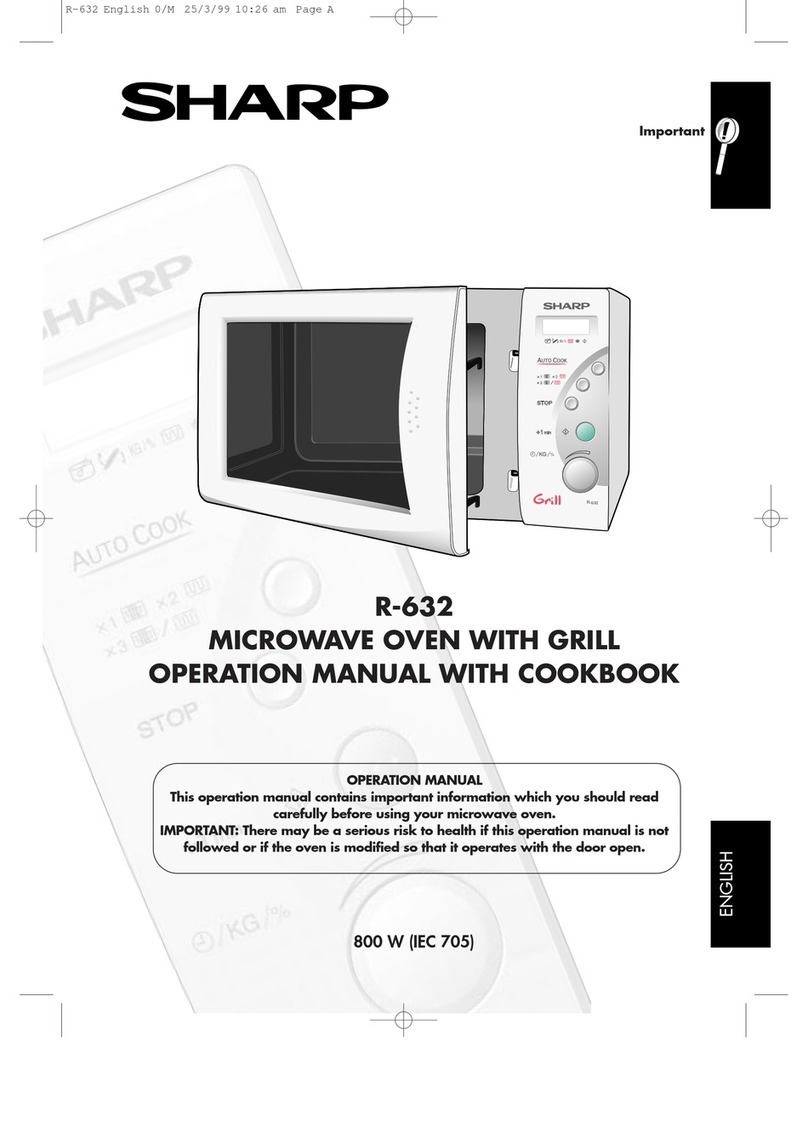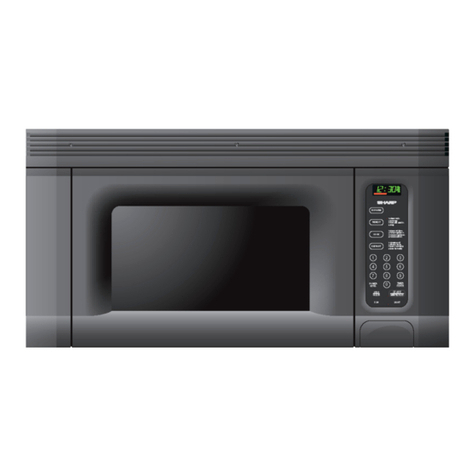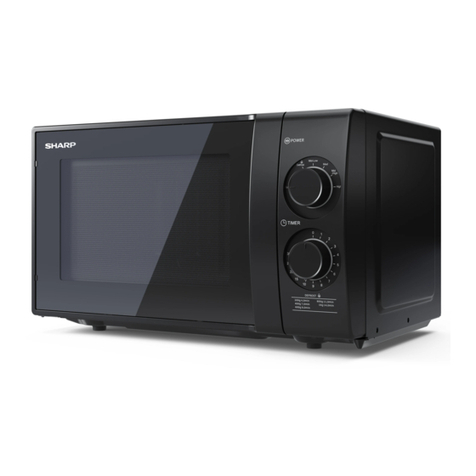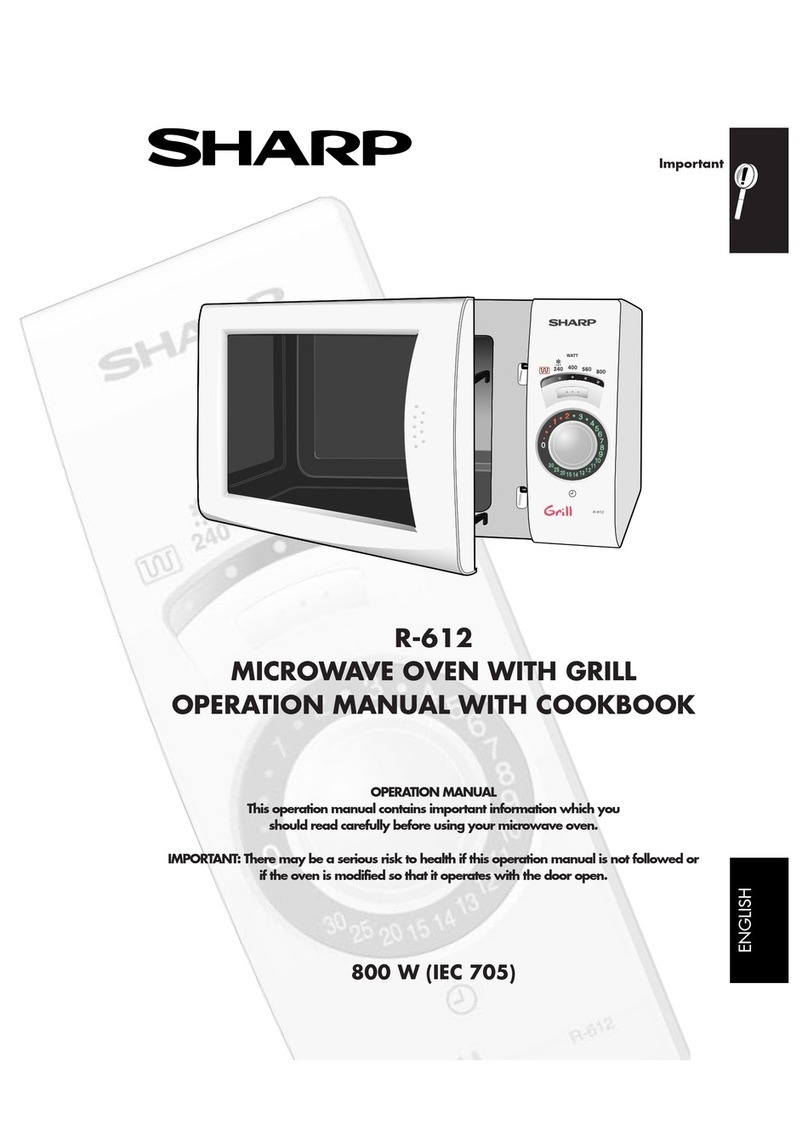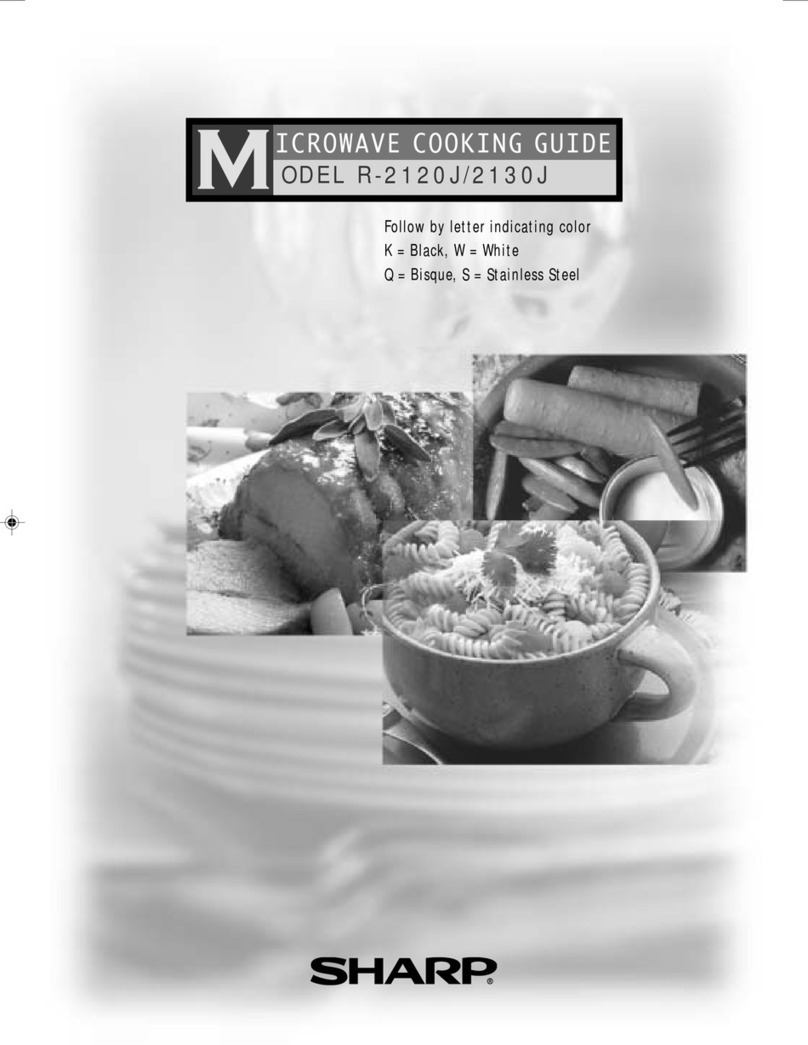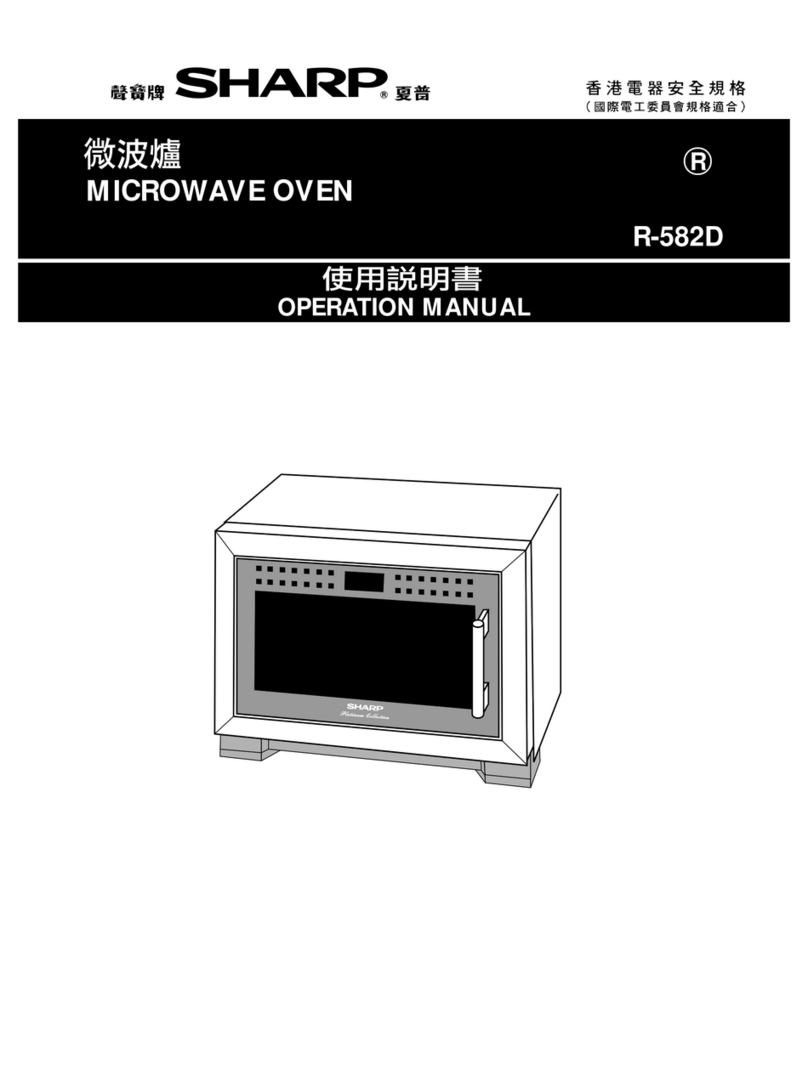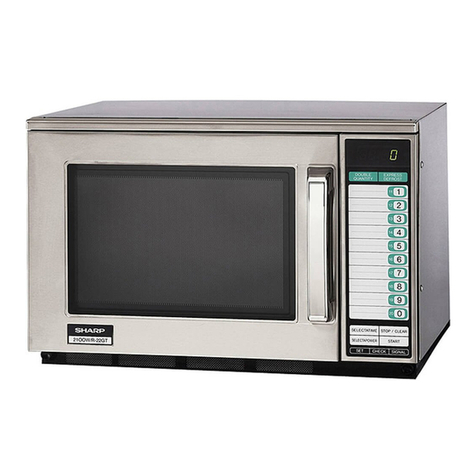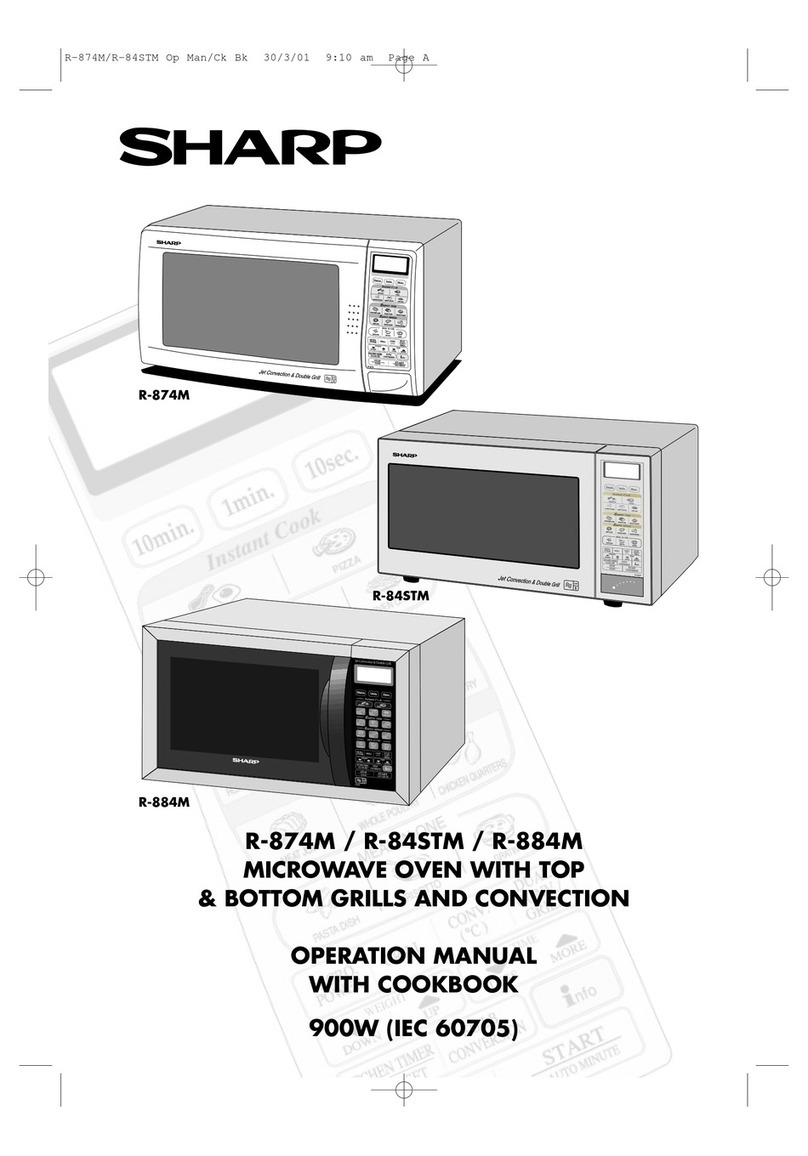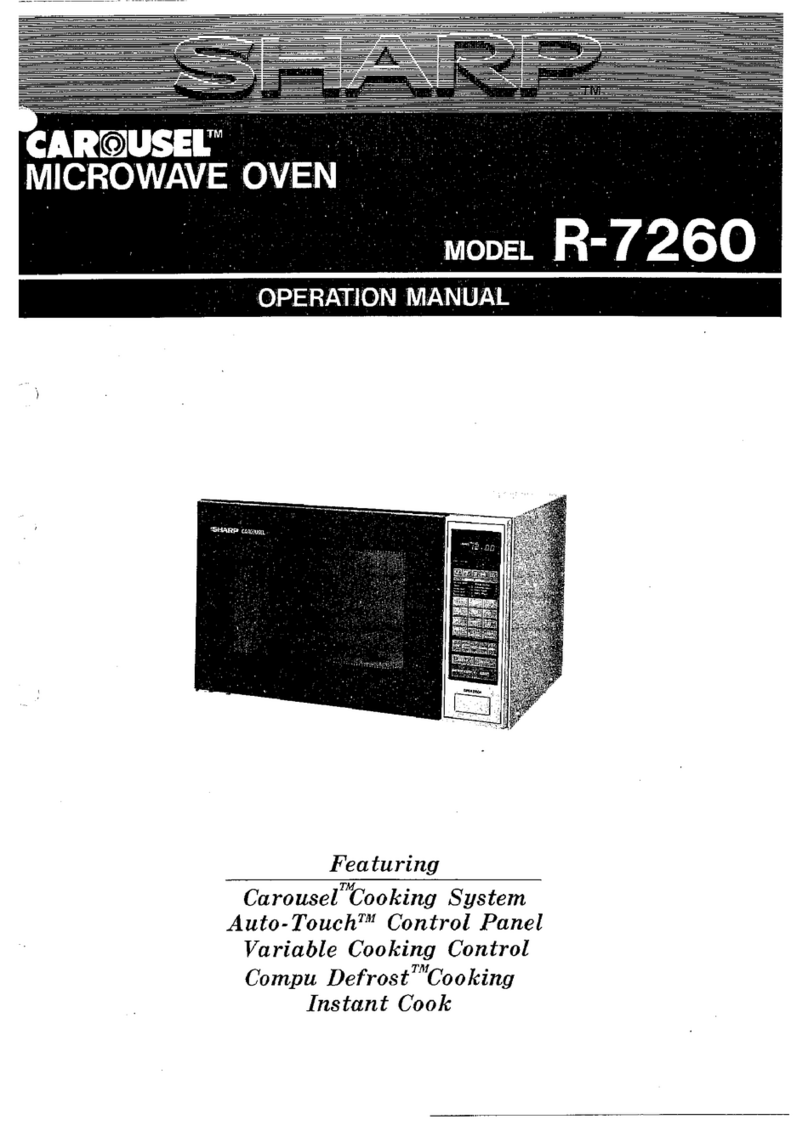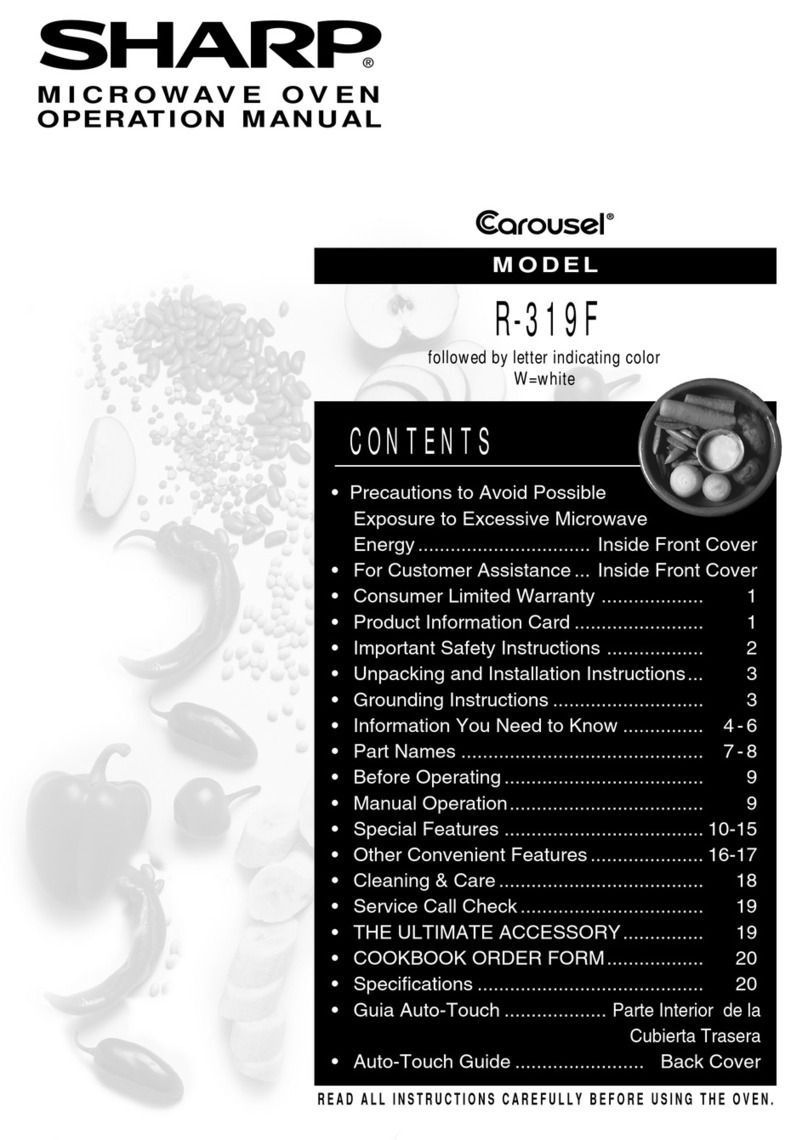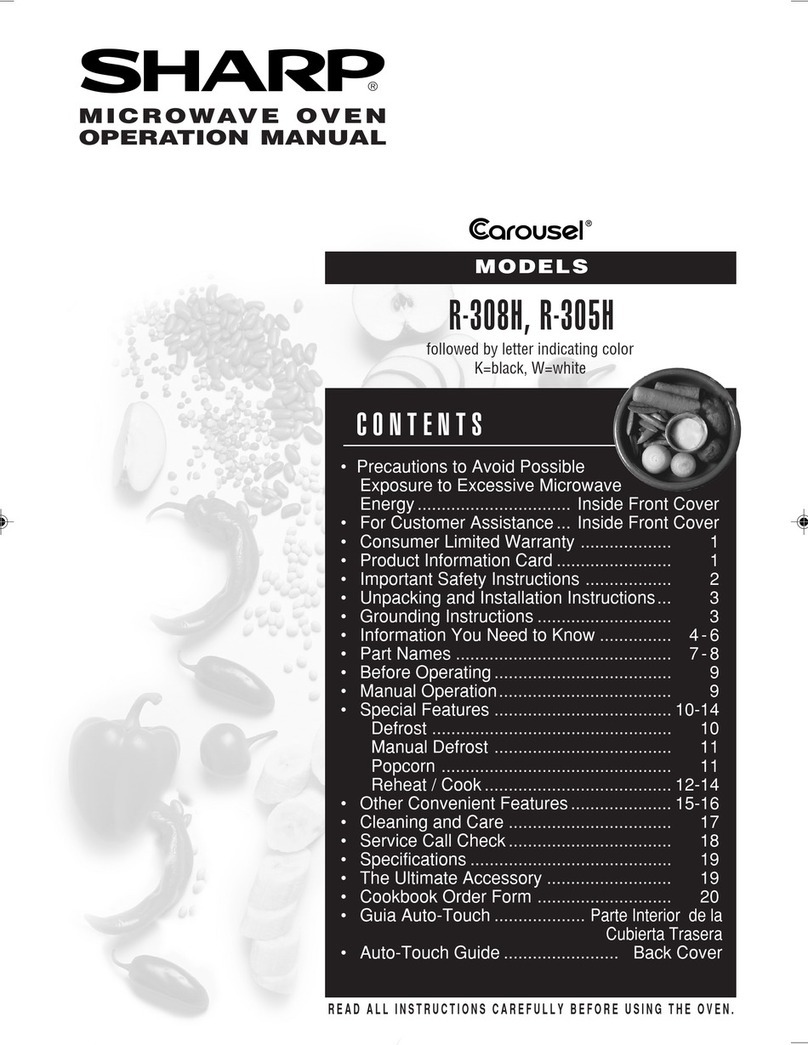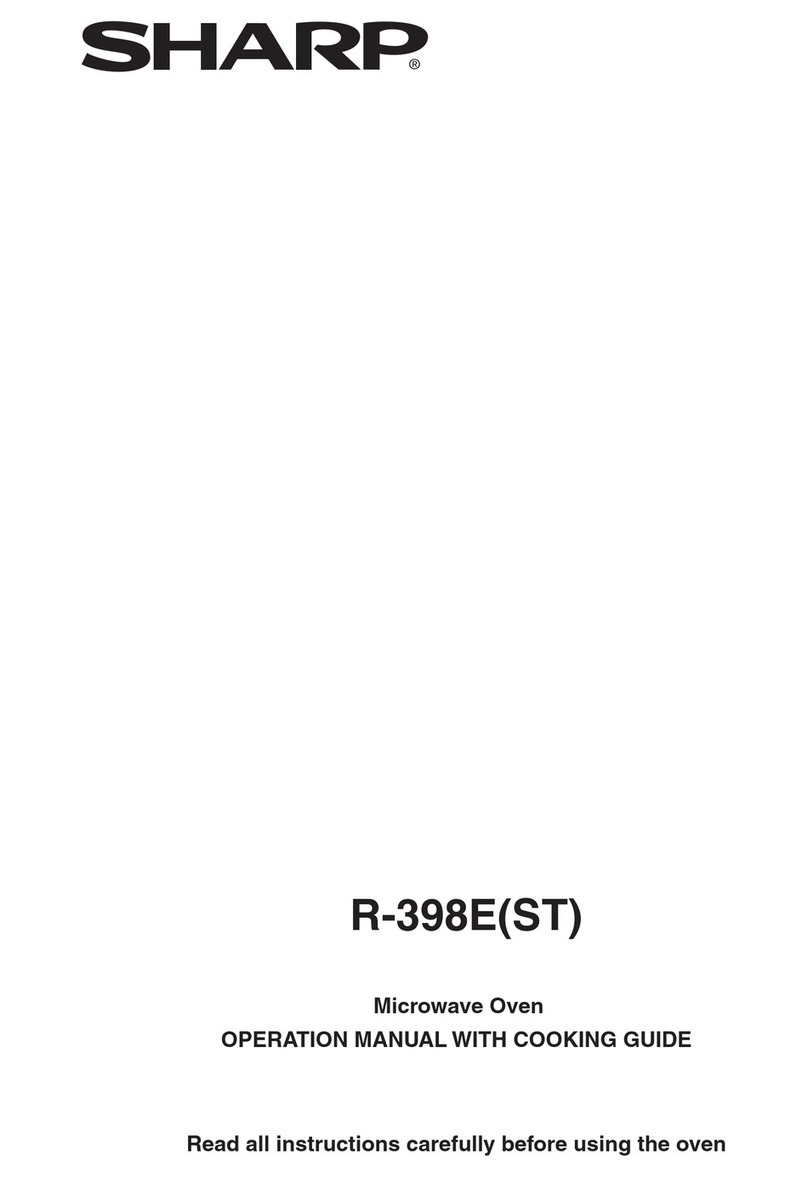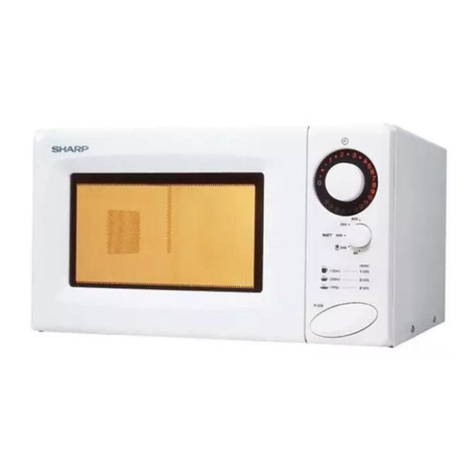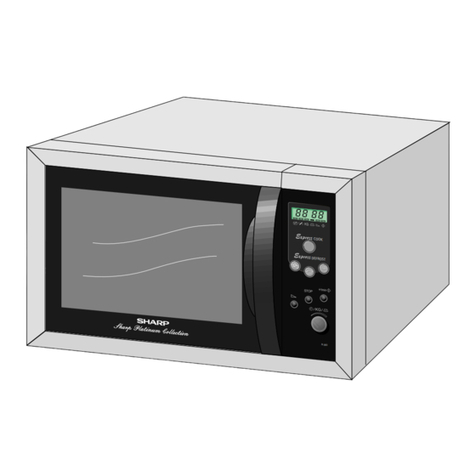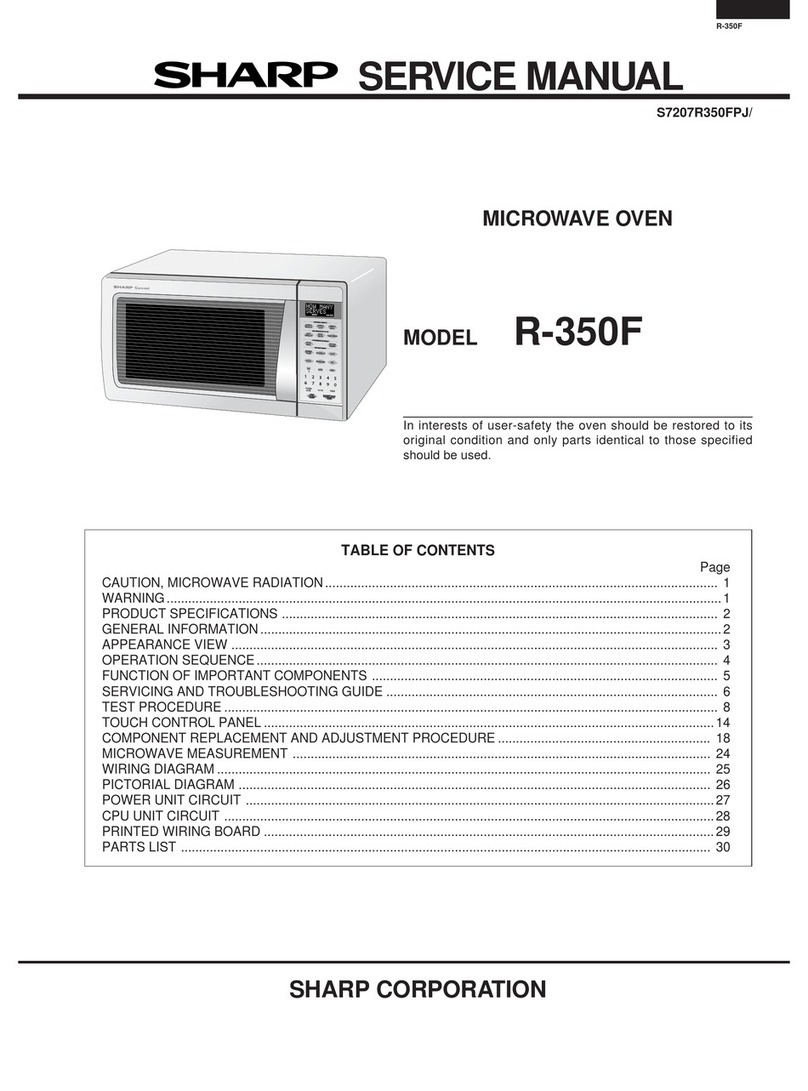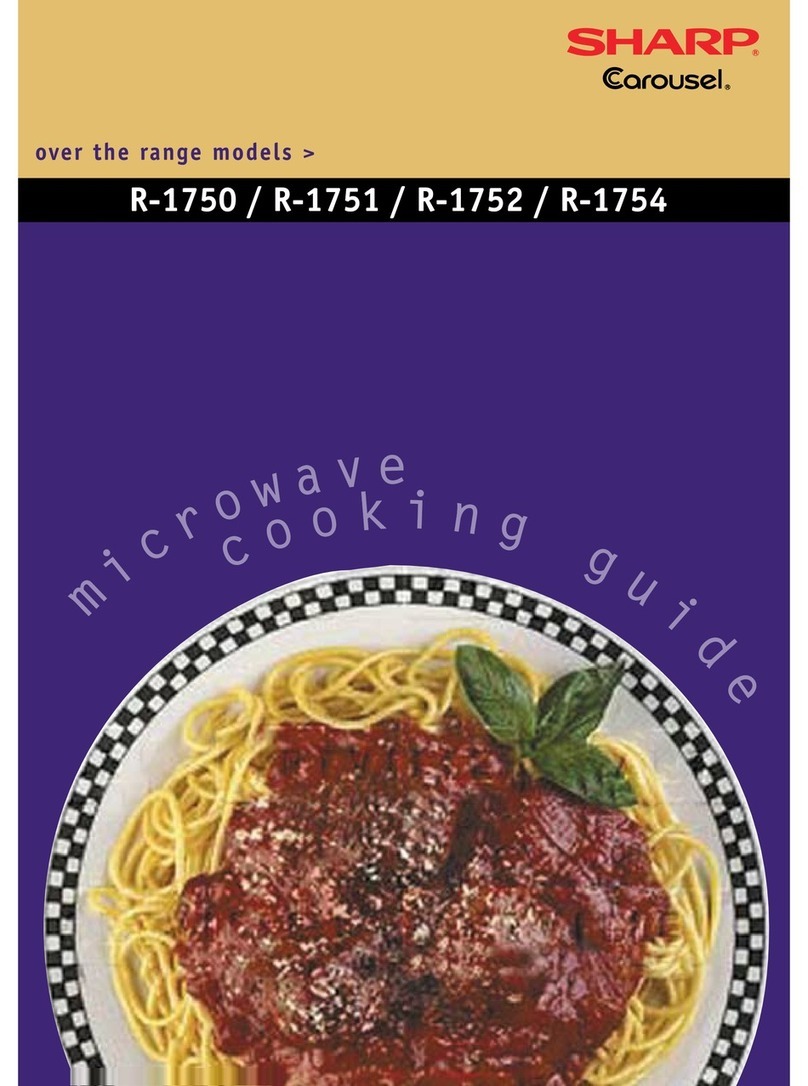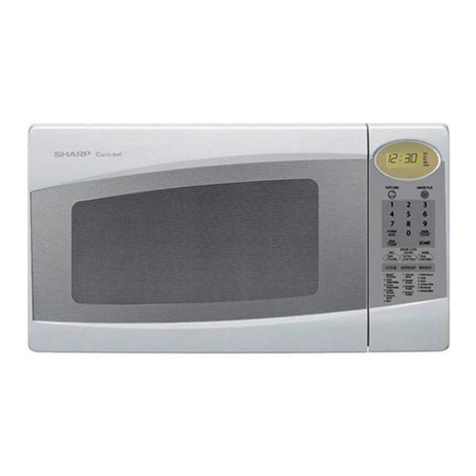R-9H58
6
MICROWAVE
2. Heatpotatoes.Moistureandhumidityisemittedrapidly.
You can smell the aroma as it cooks. ;
MICROWAVE
AH SENSOR
3. Sensor detects moisture and humidity and calculates
cooking time and variable power.
AH SENSOR COOKING SEQUENCE
1. Incasethe AH sensorcookingcondition isstarted,the
coil of shut-off relays (RY1+RY6) are energized, the
ovenlampandcoolingfanmotorareturnedon,butthe
power transformer is not turned on.
NOTE: TheovenshouldnotbeoperatedonAHSENSOR
COOKING immediately after plugging in the unit.
WaitfiveminutesbeforecookingonAH SENSOR
COOKING CONDITION.
2. After about 16 seconds, the cook relay (RY2) is
energized. The power transformer is turned on,
microwaveenergyisproducedandfirststageisstarted.
The16 secondsis thecooling time required to remove
any vapour from the oven cavity and sensor.
(Figure O-2)
NOTE: During this first stage, do not open the door or
touch STOP/CLEAR pad.
3. The oven will go to the Mix Cooking Condition at the
2nd. or 3rd. stage when Reheat pie, Casseroles or
Desserts has been chosen. (Figure O-4)
4. When the sensor detects the vapour emitted from the
food,thedisplayswitchesovertotheremainingcooking
timeandthetimercountsdowntozero.Atthistime,the
door may be opened to stir food, turn it or season, etc.
NOTE: In case where a small quantity of food is cooked,
theovenwillstopwithoutdisplayingtheremaining
cooking time.
5. Whenthetimerreacheszero,anaudiblesignalsounds.
The shut-off relay (RY1+RY6) and cook relay (RY2)
are de-energized and the power transformer, oven
lamp, etc. are turned off.
6. Opening the door or touching the STOP/CLEAR pad,
the time of day will reappear on the display and the
oven will revert to an OFF condition.
MULTI COOK
MULTI COOK will automatically compute the oven tem-
perature, microwave power and cooking time for baking
and roasting. Set the desired program by touching the
MULTI COOK pad, and number pad. Enter the weight by
touching the Number pads. When the START pad is
touched, the following operations occur:
1. The COOK indicator will light and the Microwave
Symbol and/or the Convection Fan Symbol will rotate.
2. The cooking time will appear on the display and start
counting down to zero. The cooking time is adjusted
automatically according to the weight of the food.
3. The shut-off relays (RY1, RY3, RY5 and RY6) are
energized, turning on the oven lamp, turntable motor,
cooling fan motor and convection motor. The power
supply voltage is added to the convection heater.
4. Now, the oven is in the convection cooking mode.
5. When the oven temperature has reached the
programmed convection temperature, the oven goes
into the programmed cooking mode.
6. At the end of the MULTI COOK cycle, the damper is
returnedtotheopenpositionandtheovenwillgotothe
off condition. The cooling fan will remain on until the
oven has cooled.
EASY DEFROST COOKING
The EASY DEFROST key is a special function key to
defrost meats and poultry faster and better.
EASY DEFROST key has 4 defrost stages.
EASY DEFROST automatically defrosts roast beef, etc.
WhenEASYDEFROSTisselectedandthefoodweightis
entered by using the number pads, the oven will cook
according to the special cooking sequence. (Figure O-2)
FIRE SENSING FEATURE (MICROWAVE MODE)
This model incorporates a sensing feature which will stop
the oven's operation if there is a fire in the oven cavity
during microwave cooking.
This accomplished by the LSI repeatedly measures the
voltageacrossthetemperaturemeasurementcircuit(ther-
mistor) during it's 32-seconds time base comparing the
obtained voltage measurements. If the most recent volt-
age measured is 300mV grater than the previous voltage
measured,theLSIjudgesitasafireintheovencavityand
switchesofftherelaystothepowertransformer,fanmotor
and convection motor. The LSI also stops counting down
and closes the damper door so that no fresh air will enter
the oven cavity. Please refer to the following section for a
more detailed description.
Operation
Please refer to the timing diagrams below.
1. Thethermistoroperateswithina32-secondstimebase
and it is energized for three (3) seconds and off for 29
seconds. Two (2) seconds after the thermistor is
energized, the voltage across the temperature
measurementcircuit is sampled by theLSI and twenty
one (21) seconds after the thermistor is cut off the LSI
turns on the cooling fan for six (6) seconds.
2. The above procedure is repeated. If the difference
between the first voltage measured (in step 1) and the
voltage measured when the procedure is repeated
(step 2) is greater than 300mV the LSI makes the
judgment that there is a fire in the oven cavity and will
switch off the relays to the power transformer, fan
motor and convection motor. The LSI also stops
counting down and closes the damper door so that no
fresh air will enter the oven cavity.
3. Oncethefiresensorfeaturehasshuttheunitdown,the
programmed cooking cycle may be resumed by
pressing the "START" pad or the unit may be reset by
pressing the "CLEAR" pad.
